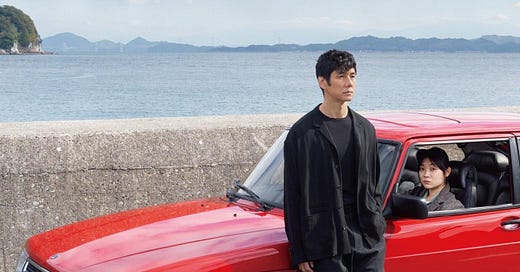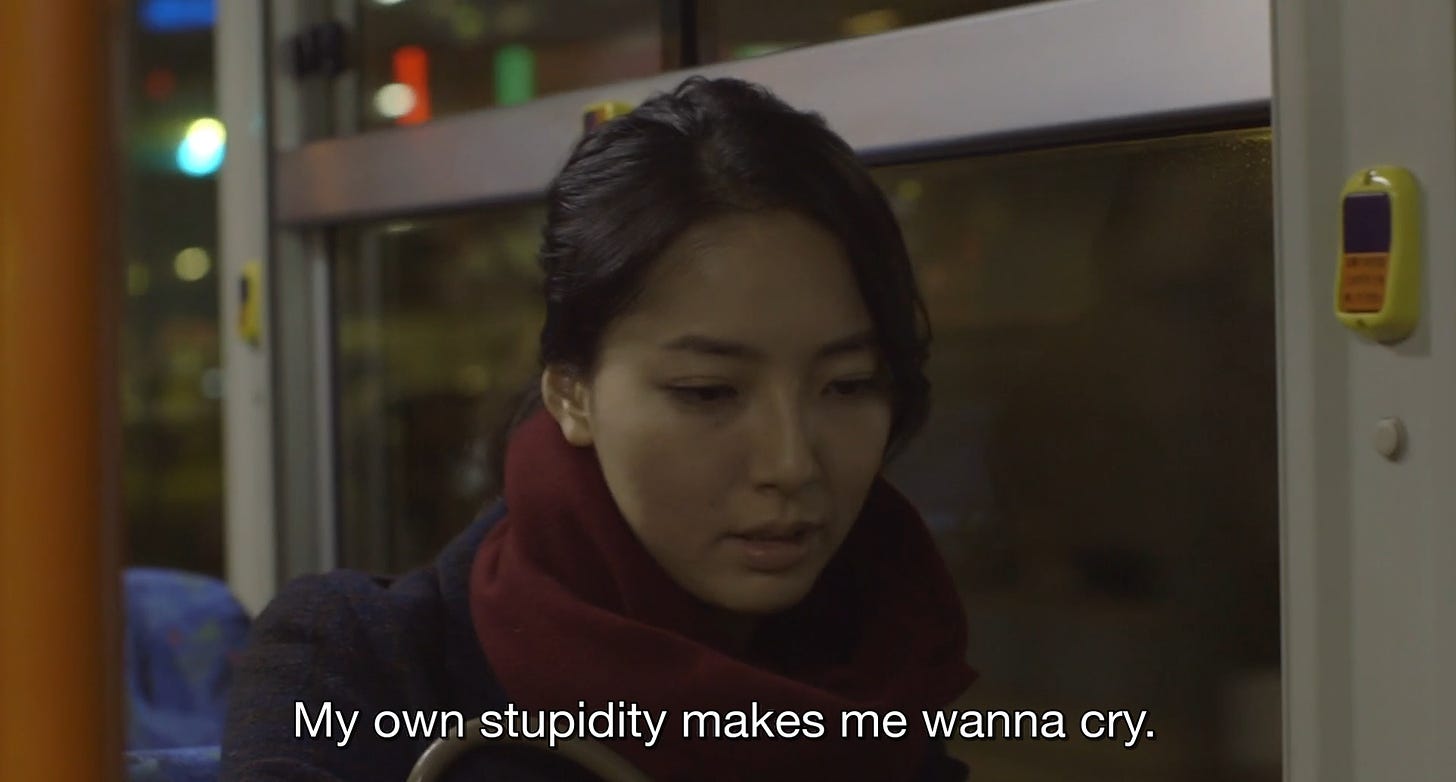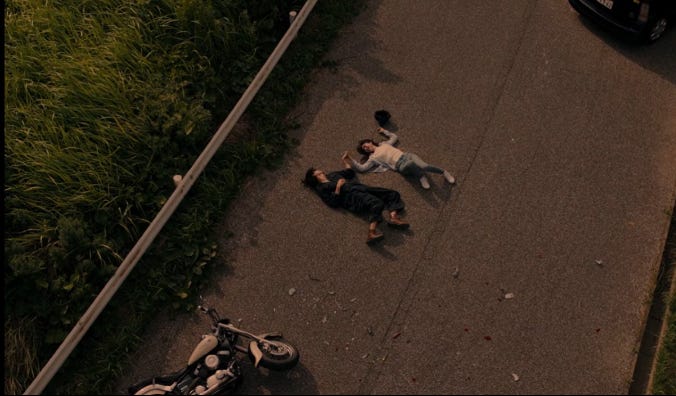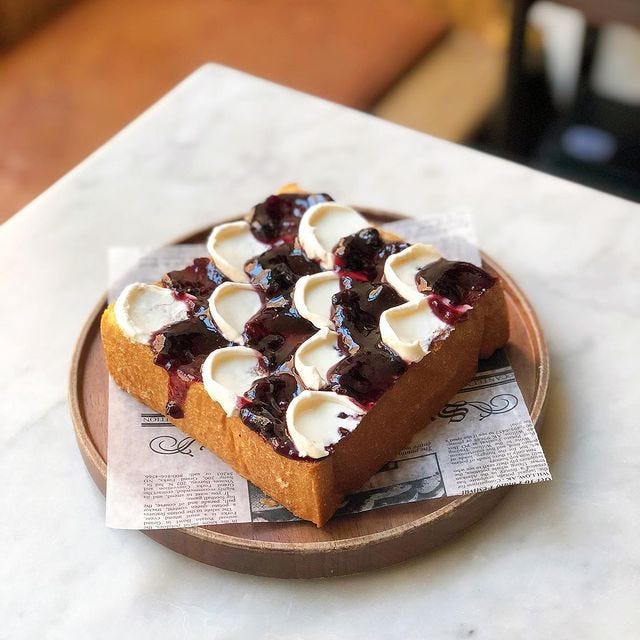Movies by Ryusuke Hamaguchi & toast
Wherein I try to convince you to watch movies from a director you’ve never heard of
Best known for his five-hour epic Happy Hour that improbably recalls both Sex and the City and the films of Jacques Rivette, Japanese filmmaker Ryusuke Hamaguchi has two new films out this fall. He’s made a parlor trick out of staging these atmospheric shifts in his movies that change the mood ever so slightly to reveal the confused logic of human behavior. Though long, his films aren’t exactly slow cinema. They’re a most delicate mind-fuck and the runtime just gives him breathing room to do his thing at his own pace and successfully cast a spell.
His latest, Drive My Car is based on a story by Haruki Murakami, an author who I am not fond of and whose stippled prose makes me want some sort of metaphysical refund on my time. But, Hamaguchi manages to pressurize the emotional isolation of the source material and takes his own liberties to create a heightened melodrama. You can read more about Drive My Car, which opens this week, in this essay I wrote for the LA Review of Books Blog.
Here are a few more words about his other recent efforts.
Wheel of Fortune and Fantasy
Wheel of Fortune and Fantasy is but two hours long and reminiscent of Hong Sang-soo. It consists of three seemingly simple stories, each less cryptic than the one before it: a woman tells her friend about a date; an adulterous woman sets a honeytrap; and a woman attends a reunion. Hamaguchi captures the womens’ compressed anguish—the small but potent energy that gathers in the space between your eyebrows when you furrow your brow—and redirects it into this beguiling tale about the enigma of human desires, his preferred topic. Playing and streaming virtually in select theaters.
Asako I and II
If you’ve never been ghosted, or broken up with, Asako I and II can ably reconnect your heart, body, and soul with such feelings of abrupt and sorrowful abandonment. Deeply impressive though is this movie’s ability not to make you cry, but to drop your jaw down to your knees.
Only superficially tied to Vertigo, Hitchcock’s magnum opus on cinema/love/death, about a man trying to recreate woman in his preferred image, this quiet Japanese epic reverses the roles: a young woman chances upon a dead ringer for her ex-boyfriend years after he unceremoniously absconds. (He is the most beautiful scoundrel.) She begins dating the doppelganger, stoking a moral debate about her intentions and mental faculties.
Asako’s non-reaction to the lookalike may grate some viewers. She is mesmerized to the point of perpetual standstill. Instead of explaining her past history to her new lover 2.0, rationalizing her choices to her friends, or attempting to solve the mysteries of a universe that would produce such a replica of her sweetheart, she trudges through daily life with extreme curiosity, as if all is normal in a role-playing of her own. The film’s crisp backdrop of a cookie-cutter society aided by affable synth beats only heighten the sense of normalcy.
But her do-nothing attitude actually isn’t a symptom of shirking flower syndrome, weak knees, or galaxy brain. It’s a telegraphing of her confusion—a body in shock, deep in contemplation. Preceding every delayed gesture and smile is a wealth of decision-making and emotional bartering on her part that we, and she, don’t really compute until the devastating end.
RIYL: Force Majeure, Lars and the Real Girl, thinking about this two-part question: 1. Whatever happened to my ex? And 2. Is it weird to date someone who looks like my ex?
Shokupan toast
The thick slabs of milk bread toast are the digestible parallel to Hamaguchi’s films: seemingly simple, unexpectedly endowed with profundity, yielding more than meets the eye.
My mother preferred her morning bread with cream cheese and jam long before places like Sqirl made a name peddling the elevated artisanal versions of such, and it’s not difficult to see why. A homey piece of toast laden with toppings isn’t refined, so much as it’s made to a simple-but-precise specification that snaps everything into brighter focus. The Japanese equivalent uses shokupan, a loaf enriched with milk to divine ends that demonstrate the cottony wonders of white bread, maligned too often in this post-sourdough world.
At Davelle, a Japanese homestyle cafe or kissaten in the Lowest East Side, the slices are more substantial than you’d expect, cut to the approximate height of a kitten heel. My plan to order a second one was scrapped, so I had to return another time to try a different flavor. The black sesame version, smeared with alternating petals of cream cheese and sprinkled with soy flour, balances savory and sweet, and is my preference.
Where to find milk bread
The Korean bakery chain Paris Baguette
Patisserie Fouet in NYC, shipping nationwide
ACQ Bread in Brooklyn (mixed by hand and fermented wildy, this loaf, naturally, is more tangy, dare I say even sour, compared to your typical shokupan)
Ayako & Family in Seattle
Make the roll-version on your own with this recipe from King Arthur Flour








